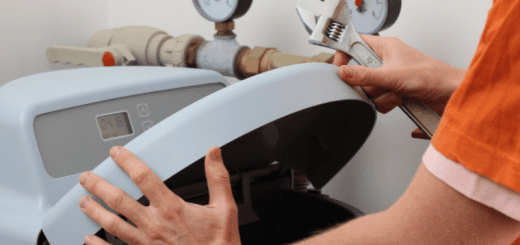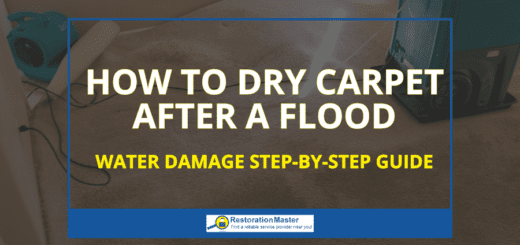What Causes a Dishwasher to Leak?
Dishwasher leaks pose significant risks to your home, leading to potential flooding or damage to the walls adjacent to the appliance. Such leaks can stem from various sources, including complications with the water supply, drainage issues, imbalance of the unit, gasket defects, use of incorrect detergent, a contaminated gasket, or other damaged parts. Promptly addressing these problems is crucial to prevent extensive damage to your property.
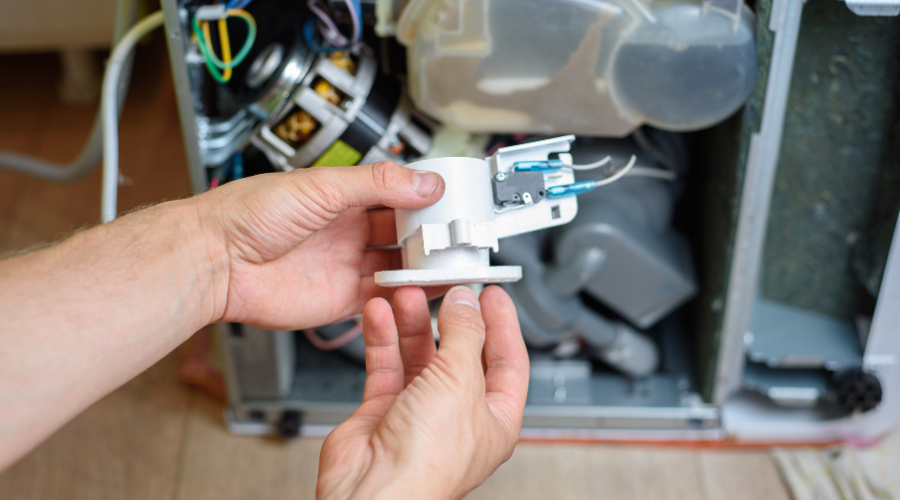
Figuring Out Why Your Dishwasher is Leaking
Water leaks in your dishwasher could originate from beneath the unit or from the front door. Before attempting to diagnose the source of the leak, it’s crucial to consult the appliance’s instruction manual. This is because any required replacement parts will be model-specific. Below are some general guidelines to assist you in addressing a leak in your dishwasher:
- Make sure the unit is disconnected from the power before you start repairing it. Just simply unplug the appliance or turn off the breaker.
- Close the water valve beneath the sink.
- Keep towels or a spongeA sponge is a porous material used to absorb liquids or clea... More near you to pick up any water from the floor, so it does not become slippery.
Always check YouTube for easy video tutorials for your appliance if you find it difficult to understand the instruction manual. This will make it easier for you to address the problem yourself.
Common Reasons Your Dishwasher May Leak
There are many reasons why your dishwasher may be leaking. Here are a few things water damage repair professionals advise homeowners to check to find the source of the leak:
- Water supply
- Drain line
- Check if your dishwasher is leveled
- Check the latch or gasket
- Check if you are using a proper detergent
- Check if the door gasket is dirty
- Check for damaged components
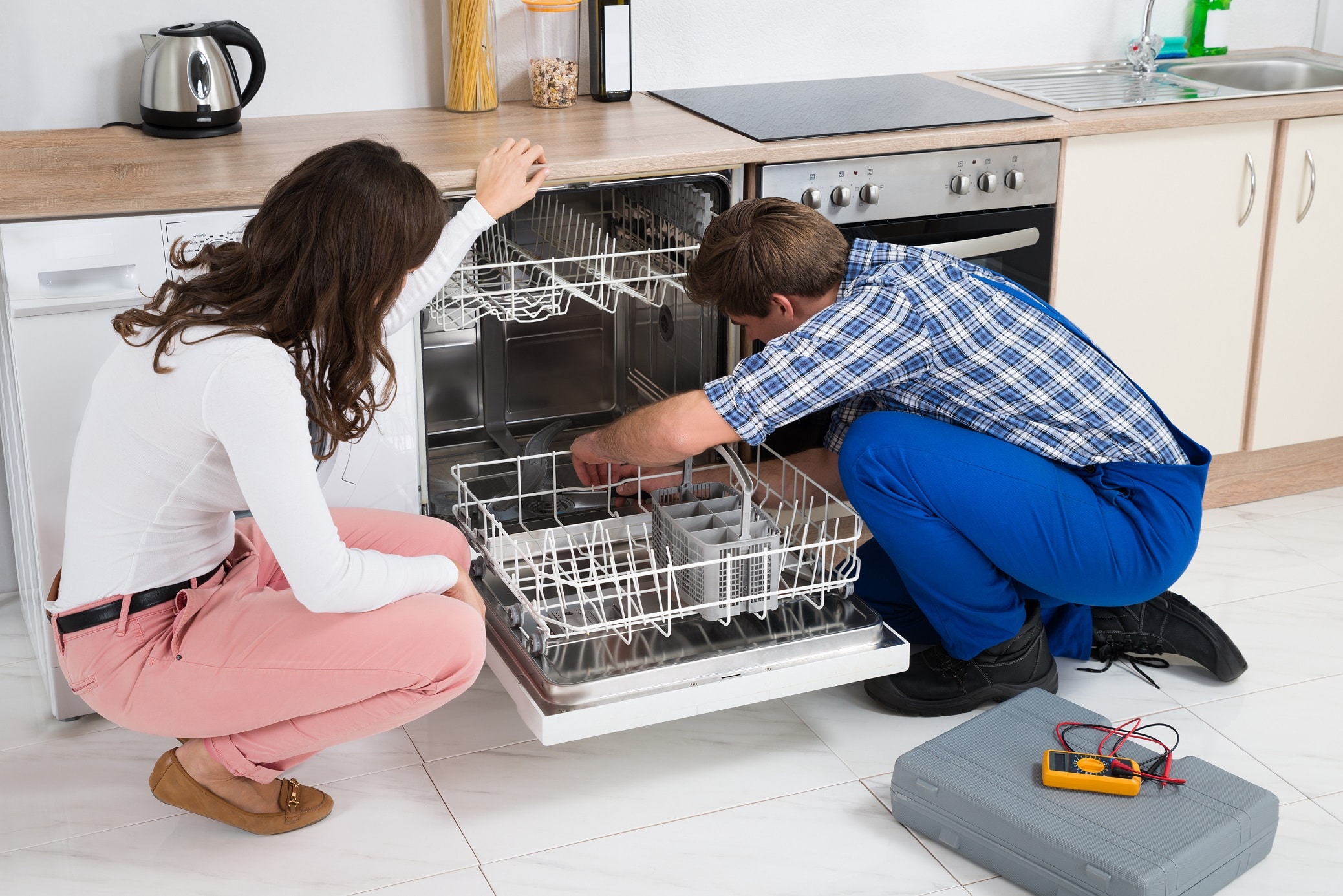
Water Supply Leak
Occasionally, leaks in your dishwasher stem from a leak in the water supply line, typically located beneath the unit. Should you discover the leak originates from the water supply line, it warrants a thorough inspectionInspection is the careful examination and assessment of a pr... More. Furthermore, if your dishwasher fails to fill with water, this indicates a malfunction in the water supply line, which is likely the culprit.
Here are some ways to fix a water supply leak and prevent further damage:
- Shut off the power to the appliance at the breaker or by simply unplugging it.
- Take off the lower kick panel.
- Remove the panel and sound insulationInsulation is a material used in buildings to reduce the tra... More, but make sure to remember how it was originally installed so you can put it back properly.
- Find the water line hookup at the front left corner of the unit.
- Make sure to inspect the water connection and check your floor for wetness.
- Simply hand tighten the hose until the coupling is tight. Then use pliers to check the tightness of the coupling. Always try to do a ¼ to ½ turn so that rubber gasket can be sealed.
- You will not need Teflon when the fittings or hoses have a rubber gasket.
Improperly Installed Drain Line
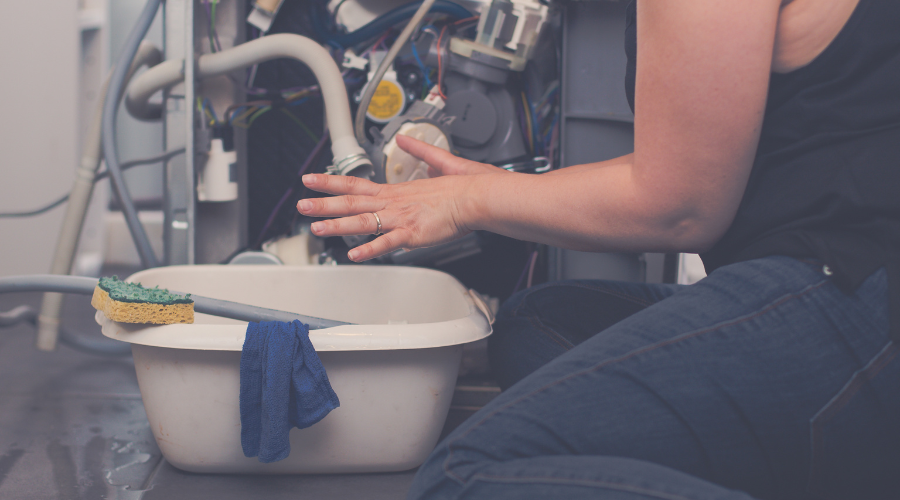
If you notice that there is extra water in the dishwasher tub, you may have an issue with your drain line. If this is the case, you will need to check below the sink and inspect the connection of your drain line.
The following steps will help you deal with an improperly installed drain line:
- Check to see if the drain line comes through the bottom of your cabinet.
- Check the owner’s manual to see if the drain hose connection, installation, and position are correct.
- Check if the hose clamp is properly positioned.
- If the drain itself looks like it is installed correctly, it may be clogged, and you will need to call a professional plumber.
Unleveled Dishwasher
For the dishwasher to work properly, it must be leveled. Leaks can happen if the dishwasher is unlevel as the water overflows the tub top and comes out below the door. To stop the leak, you will need to level the dishwasher.
These steps will help you address an unlevel dishwasher:
- Place a level against the top front of the unit to check for levelness.
- If it is not level, make sure to shut off the power to the appliance.
- Take off all cabinet anchor screws.
- Take off the lower kick panel by turning the fasteners.
- Take off the panel and sound insulationInsulation is a material used in buildings to reduce the tra... More and try to remember the correct orientation and position.
- Make an adjustment to the legs (up or down) until the unit is leveled.
- Reinstall the cabinet anchor screws.
- Turn the power on to the appliance.
Damaged Latch or Gasket
If there is a leak from the door or the front of the unit, you may have a damaged latch or gasket. Sometimes a bent or loose latch can prevent the door from closing properly, and a soiled, loose, or cracked gasket can prevent the door from sealing properly.
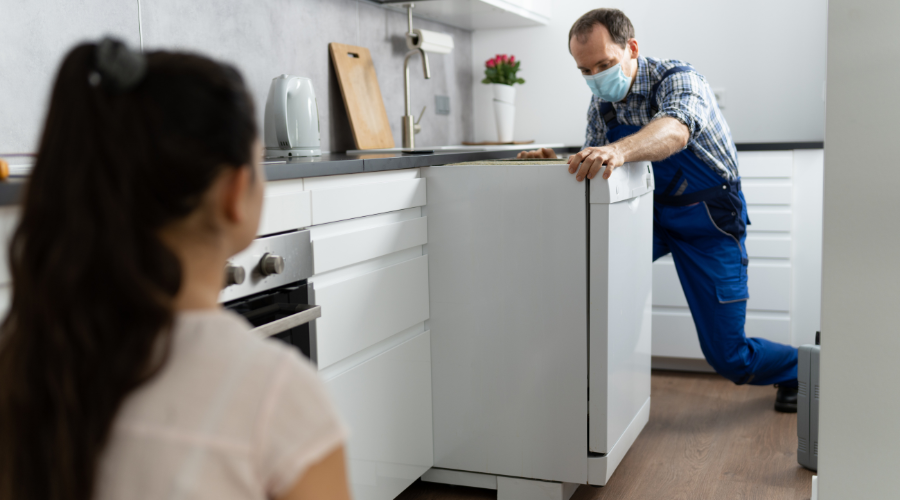
Here is how to fix a dishwasher with a damaged latch or gasket:
- Check the latch to see if it is bent or loose.
- If the latch is loose, use a screwdriver to tighten it into place.
- If you see that the latch is bent, you may need to replace it.
- Check the gasket to see if it is soiled, loose, or damaged.
- If you notice that the gasket is soiled, you can clean it with mild soap, water, and a spongeA sponge is a porous material used to absorb liquids or clea... More.
- If you notice that the gasket is loose, make sure to secure it back in place.
- If you see that the gasket is damaged, it will need to be replaced.
- Sometimes, even the door screws can become loose which can prevent the gasket from sealing. If the screws are loose, hand tighten them until they are firmly in place and in contact with the surface of the door.
Using an Improper Detergent in Your Dishwasher
Sometimes the leaks in your dishwasher may be caused by using an improper detergent. Some soaps such as hand soaps, dish soaps, and even laundry detergent can create extra suds and cause your appliance to overflow. Therefore, you should make sure you are using the proper detergent for your type of dishwasher.
If you aren’t sure if you are using the right detergent for your dishwasher, check the following:
- Make sure you are only using automatic dishwashing detergent.
- Your dishwashing detergent should always be stored in a dry, cool place so that it stays fresh.
Dirty or Soiled Door Gasket
If the door gasket of your dishwasher is dirty or soiled, it may prevent the door from sealing properly which can cause a leak.
These steps will help you address a dirty or soiled door gasket:
- Use a damp washcloth to wipe down your gasket.
- Scrub the gasket with a toothbrush and warm and soapy water.
- If you have mold or mildew, spray it with 3% hydrogen peroxide.
Possible Damaged Component in Your Dishwasher
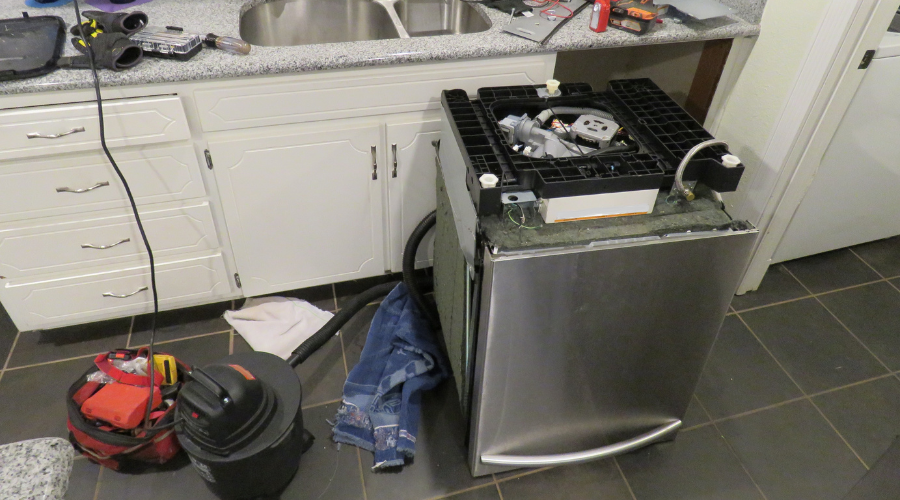
If you think there may be a damaged component causing the leak, you will need to call a professional to fix it. Always make sure to shut off the water supply line while repairing the unit. A leak in your dishwasher could be caused by the following components:
- Broken water pump system:
The water pump system carries water to the wash cycle and releases water out of the drain. If your water pump system is broken, you can either repairRepair is the act of fixing or restoring damaged property, m... More it or replace it. You should always call a professional to replace this system.
- Filter that is clogged:
If your filter is clogged, it may cause a leaky dishwasher. The filter helps trap food particles before your drain catches them. However, if your filter gets too full, water will overflow and it will start coming out of the bottom of your machine. To avoid this issue, make sure to clean your water filter regularly.
- Damaged water inlet valve:
Always make sure to check the inlet valve which lets water into the chamber of your dishwasher for any issues. If the valve has an issue, your dishes will not be cleaned properly. It is always best to get the inlet valve replaced by a professional if you notice it is leaking. Over time the leak will get worse if you do not fix it.
- Defective float switch:
The float switch controls the water levels during the wash and rinse cycles. If your switch becomes damaged, water will rise too high, and a pool of water will be created under your dishwasher. If you think you may have an issue with the float switch, make sure to reach out to a professional to get it repaired.
Professional Water Damage Restoration

If you have experienced water damage at your home due to a leaking dishwasher, overflow, or weather event, you need to call a water damage restoration professional immediately. These professionals can mitigateTo mitigate is to reduce or limit the severity of damage, ri... More the water damage by removing the standing water and moisture and thoroughly dryingDrying is the process of removing moisture from materials, s... More the affected areas and materials. They will also make sure to restore the damage caused by the water to return your property to its original state.










